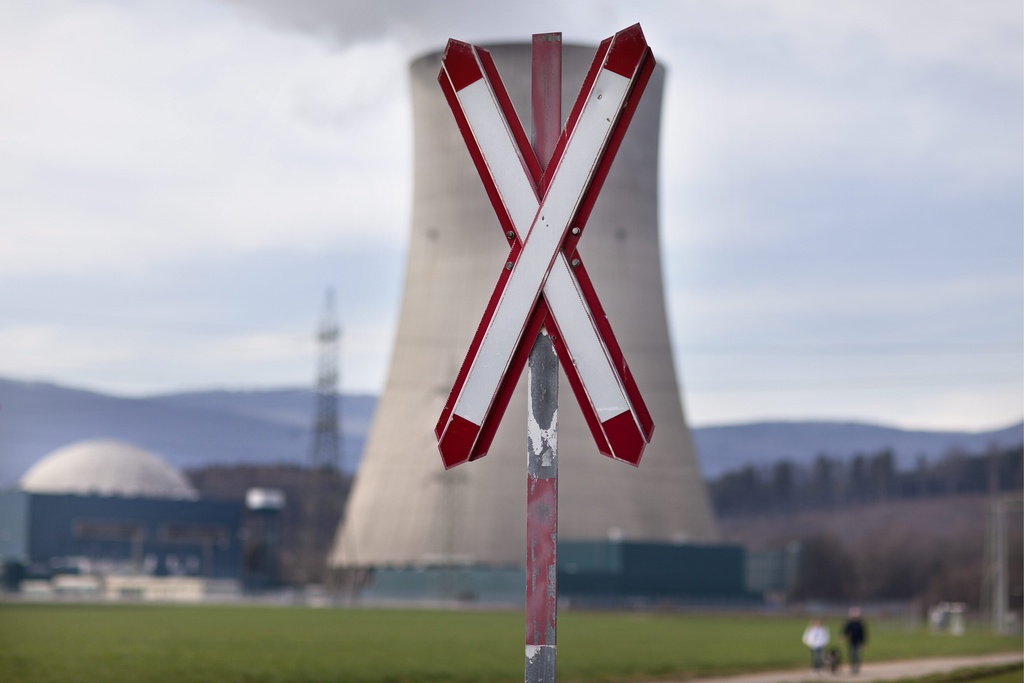“This is a pretty serious contamination”

Three months after the Fukushima power plant accident in Japan, concerns are high that radioactivity could reach the human food chain via fish, says a Swiss expert.
Nicolas Gruber, a professor of ocean biogeochemistry at the Swiss Federal Institute of Technology Zurich (ETHZ), says that, in particular, close monitoring of the levels of Caesium-137 in the sea around the plant is necessary.
The plant’s operator, Tokyo Electric Power Co (Tepco), says it dumped 10,000 tonnes of low-level radioactive water, used to cool the reactors damaged by a quake and tsunami, into the Pacific Ocean in late April. A further around 110,000 tonnes of contaminated water is currently being stored at the plant.
Tepco is aiming to set up a new water decontamination system later this month.
swissinfo.ch: How bad is the current sea contamination situation?
Nicolas Gruber: Recent measurements released by the Japanese authorities have found substantially elevated levels of Caesium-137 and Caesium-134, as well as highly elevated levels of other radioactive isotopes. For Caesium-137, which has the longest half-life time of about 30 years, levels in proximity to the nuclear power plant were about 300 times higher than what is acceptable and almost 1,000 times higher than what was measured previously in that region. So this is a pretty serious contamination, but it’s what we had expected.
A lot of these radioactive isotopes leaked into the ocean as part of the effort to cool the plant but also later on they had to release some of the water used for cooling. If these elements were just to spread immediately into the open ocean there would be a pretty quick and strong dilution effect. But some of them get attached to particles and are taken up by algae that grow and then sediment with those radioactive isotopes to the bottom of the ocean.
We’re particularly concerned about Caesium-137 getting into the water column and into marine life – through fish eating the mussels and worms that live in the sediment – and eventually into the fish that we consume.
swissinfo.ch: When will we know if it has got into the human food chain?
N.G.: I’m not in a position to make an accurate forecast. What is more important are the consequences and in my opinion the situation needs to be more accurately monitored: we have to understand much better the distribution of contamination on the sea floor and how wide it is. Based on this more accurate picture, the authorities need to close fisheries in that region until we have a better knowledge of how quickly Caesium-137 is moving into the food chain.
swissinfo.ch: Could other countries be affected by the contamination?
N.G.: As far as we currently understand the situation it is a local and regional problem. It’s really the region around the Fukushima power plant, but we’re talking about at least 100-200 kilometres on either side. I don’t think yet that other countries have to worry about this. There was a big contamination but it has been diluted by the huge Pacific Ocean.
swissinfo.ch: Can the sediment be cleaned up?
N.G.: Fundamentally you could clean it up but I don’t think this is the best thing to do. You essentially need to scrape up the surface of these ocean sediments and then store them somewhere. But experience has shown from other contaminants that this is something that you do only in very extreme cases. The problem is when you dig the sediment up you spread a lot of it around. So it’s better that the radioactive isotopes stay in the sediment. So the conclusion is that you have to close the area and you have to keep it closed for a long time.
swissinfo.ch: What else could be done to contain the contamination?
N.G.: At the moment the situation is still largely uncontrolled. For example, heavy rainfall tends to wash not only what’s in the plant but also the contaminated soils around it into the ocean. So the more you can limit this the better – and the new water decontamination system is certainly a good idea. But I’m not 100 per cent positive it will solve all the problems.
The eventual plan seems to be to build a large structure around the whole power plant which will contain air, soil and water contamination and I think that’s the only way.
swissinfo.ch: How does the future look? The contamination could be around for decades.
N.G.: Yes, we have created a problem that’s going to stick around and require a massive effort. For example, it’s now 25 years after Chernobyl and cleaning up efforts are by no means close to being finished. I expect this will be true with Fukushima.
It looks very much like Tepco will not be able to provide all the money for that and so the Japanese government, in other words the Japanese people, will have to pay for the cleaning up effort which will be massive in scale.
Radioactive isotopes: any of several species of the same chemical element with different masses whose nuclei are unstable and dissipate excess energy by spontaneously emitting radiation.
Half-life time: is the amount of time it takes for half of the atoms in a sample to decay: for Caesium-137 it is 30 years, but for Caesium-134 it is around 2 years.
Water column: conceptual column of water from surface to bottom sediments.
Ocean biogeochemical cycles: the cycling of elements within the ocean i.e. how elements are taken up by biology, how they are being recycled within the ecosystem, how this is exported and how ultimately everything is connected to ocean circulation.
The magnitude 9 earthquake on March 11 and the massive tsunami that followed killed about 24,000 people in Japan and knocked out the Fukushima plant, triggering the world’s worst nuclear accident since Chernobyl in 1986. It has been rated a level 7.
Three reactor cores melted after the tsunami destroyed backup generators at the site 40km north of Tokyo, damaging critical cooling systems.
On June 7 Japan more than doubled its estimate of radiation that escaped from the plant in the first week after the disaster to 770,000 terabecquerels (up from its earlier estimate of 370,000 terabecquerels). It also said meltdowns took place in three reactors more quickly than earlier believed.
Swiss reaction has been to phase out nuclear power by 2034. In terms of air pollution, the Federal Health Office says that the “slightly higher” levels of radioactive elements recorded after the accident have now disappeared and were in any case much lower – 1,000 to 10,000 times – than after Chernobyl. The small amount of food imports from Japan are monitored.

In compliance with the JTI standards
More: SWI swissinfo.ch certified by the Journalism Trust Initiative













You can find an overview of ongoing debates with our journalists here . Please join us!
If you want to start a conversation about a topic raised in this article or want to report factual errors, email us at english@swissinfo.ch.